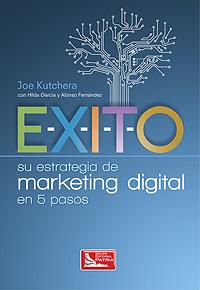In researching my new book, I have had the opportunity to get to know some of the great people at One Laptop Per Child (OLPC). The non-profit aims “to create educational opportunities for the world’s poorest children by providing each child with a rugged, low-cost, low-power, connected laptop with content and software designed for collaborative, joyful, self-empowered learning,” according to its mission statement.
To this end, OLPC has designed the hardware, software and content to promote collaboration and self-learning. With these tools, children take their own education into their hands. They can learn, share, and create together. They connect with each other, the world and “a brighter future.”
OLPC’s product, the XO Laptop, evolved out of the educational research of Seymour Papert, an MIT mathematician, computer scientist, and a founding faculty member of the MIT Media Lab. Since the 1960’s, he has promoted the idea of children using computers as instruments for learning and for enhancing creativity. Papert is known as the creator of “constructionism,” an educational learning theory that suggests that students learn best by doing, often with little intervention from teachers. Teachers take on a “mediator” role rather than an “instructionist” position, in a constructionist learning environment. Teachers assist students to understand in a hands-on way versus teaching “at” students.
With this philosophy as the basis for the new product, Seymour Papert, Nicholas Negroponte and Alan Kay launched One Laptop Per Child in 2005 to implement constructionist learning principles by providing low-cost laptops to every child in the developing world. The organization’s five guiding principles include:
1. Ownership – The kids keep the laptop (and bring them home)
2. Focus on early education: 6 to 12 years old
3. “Digital saturation” so that no one feels left out
4. Connectivity
5. Free, open source software enables the OLPC platform to grow and update more easily
The XO laptops ingeniously incorporate the target users’ needs. Their rugged, drop-resistant design utilizes very little power (2 Watts vs 20-40 watts for regular laptops) from solar panels oftentimes in locations where electrical connectivity is not available. The screens can be viewed in broad daylight, specifically made for schools with outdoor classrooms. The XO’s devices come pre-installed with a variety of educational applications, designed to appeal to the naturally inquisitive nature of children.
Walter Bender developed Sugar, OLPC’s open source learning platform, as the default interface for its XO-1 family of laptop computers. Sugar was designed with the goal of being used by children for interactive, collaborative learning. Sugar Activities encourage critical thinking, the heart of a quality education. Designed from the ground up specifically for children, Sugar offers an alternative to traditional “office-desktop” software. The software is available in 25 languages, including native languages, and Sugar’s Activities are used every school day by almost two million children in more than forty countries.
OLPC and Sugar Labs both follow the mantra “Low floor, no ceiling” to guide its design and development. Sugar aims to provide a low floor to the inexperienced, but without any ceiling for more advanced users. The XO appears to have hardware limitations but the educational and social impact demonstrates the XO can be much more than a simple laptop.
See this infographic of OLPC’s ideals, laptop components, design evolution, setbacks, and its penetration around the world since its inception over seven years ago:
Compiled By: OnlineColleges.net










